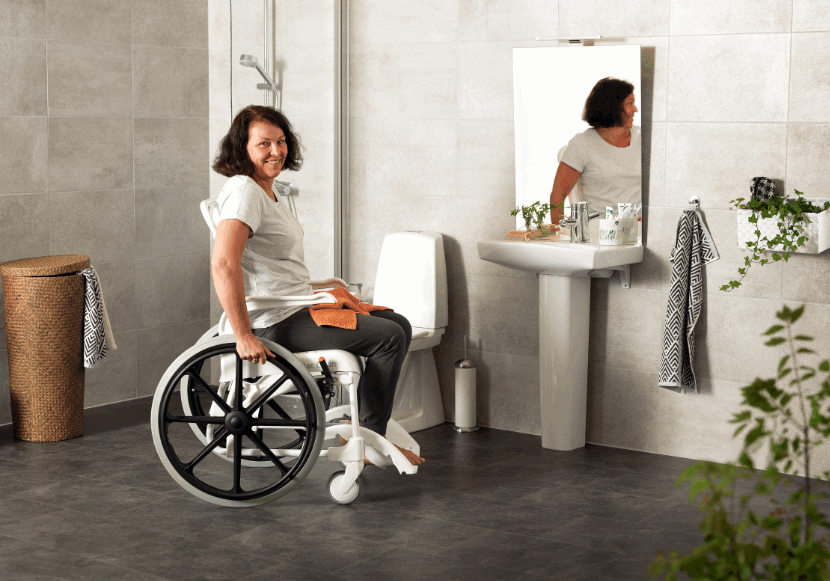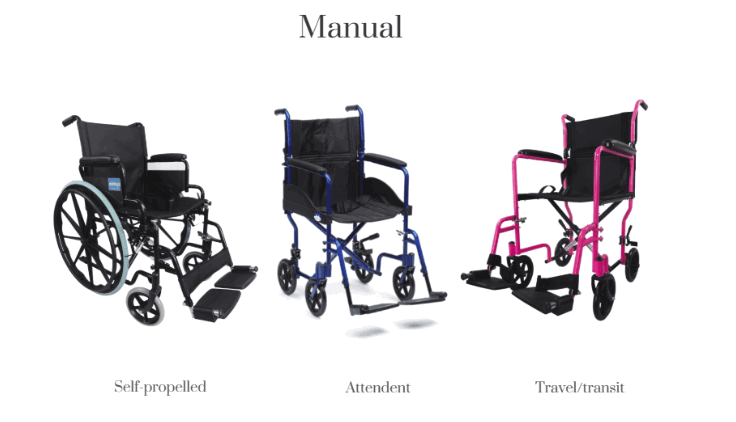Free delivery on orders over £40, only £3.95 under £40
Free delivery on orders over £40, only £3.95 under £40

There are many different types of wheelchairs available for various needs which can help the user maintain independence and allow them to travel easily. A wheelchair can offer an easy way to get around for someone with limited mobility or unable to walk. With the various styles available, the different options need to be considered to best suit the lifestyle of the user.
Some wheelchairs are specially designed for people who have complex requirements or users who spend long periods of time in the chair. If you are looking for a chair for specialist needs, speak to your OT, doctor or social services who will be able to assess and recommend a type of chair that will be suitable.
Most wheelchair users have theirs supplier by the NHS wheechair service however it is possible to buy a wheelchair or hire them if you are looking for something different or for use temporarily.
Manual wheelchairs like self-propelled or attendant are mostly suited for people who require a wheelchair most or all of the time for mobility and walking is possible but only for short periods of time. If you have adequate upper body strength and intend to propel yourself in the chair, a self-propelled wheelchair (the ones with the bigger rear wheels) would be best suited to you. The large back wheels each have an outer “push-rim” which allow you to control and turn the chair. If you’re unable to propel yourself, an attendant controlled wheelchair or even transit chair would be the better option. These have smaller rear wheels which are easy to manoeuvre for the person pushing. A self-propelled wheelchair can offer more independence as you are in control, however, manual wheelchairs and transit chairs are ideal for anyone who has supported living from a carer and needs assistance while getting about.

An electric wheelchair or powerchair is ideal if you don’t have the strength or stamina for a self-propelled chair but do not wish to rely on being pushed in a manual or transit chair. They are also suitable for longer journeys. You can opt between indoor use, outdoor use or both. If you have a manual wheelchair, but sometimes require the boost of a powerchair - a powerstroller is an affordable upgrade to a standard wheelchair allowing you to remote control it.

Choosing a wheelchair or powerchair can be tricky if you are unsure what you are looking for, if the chair is needed to suit a certain condition or need to be adapted, its always best to seek professional advice from an OT or doctor.
There are many additional extras that you can combine with a wheelchair or powerchair to make it more comfortable and suitable such as cushions, gloves, drink holders, bags and much more.

Accessories are important for wheelchair users as they offer storage solutions, safety and protection. There are hundreds of styles of bags that are designed for wheelchairs from backpacks, pannier, crutch bags and pouches. Safety is important and a wheelchair seat belt helps to keep the user secure in the seat. You can even protect against the weather with a handy wheelchair umbrella which attaches to the handles to provide protection from the rain. A drinks holder is a great way to keep a bottle or cup in reaching distance.

Comfort in a wheelchair is vital, especially if the user is spending long periods of time sitting. Cushions and backrests can help to relieve pressure and create a padded seat, which is even more important in colder months to stay warm. Gloves are perfect for self-propelled users to protect your hands against the elements and providing extra grip on the push-rims. Cosies and handmuffs are a great way to keep arms and legs warm and dry and are ideal for manual wheelchair users in particular.
Once you understand the options that are available, it is easier to make a decision on which wheelchair will be suitable. Always make sure that your chosen chair meets all the requirements so the user sits with the correct posture in the chair and it can be used in the way it is needed, whether self-propelling, attendant controlled or electrically assisted. Proper posture and correct fitting in a wheelchair is important for even distribution or pressure, maintaining comfort, reducing stress on the body and improves maneuverability .
A correct fitting wheelchair can make all the difference when it comes to using and getting around in them. It’s important to maintain good posture, especially when sitting for extended periods as it will stop any long term damage occurring and prevent discomfort allowing you to receive the independence and efficiency you need from your wheelchair.